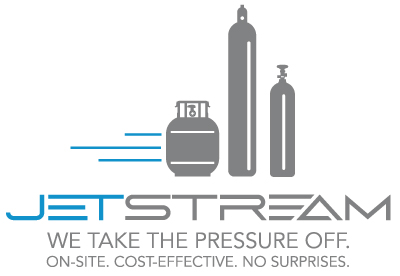 The identification of compressed gas cylinders is a difficult process. Jet Stream’s employees are highly trained to understand the different cylinder types and valves. Jet Stream Compressed Gas Services (JSCGS) has prepared this information as a simple guide to cylinder identification and is not intended to take the place of proper training or experience. JSCGS does not accept any liability for the miss use or miss identification of any compressed gas cylinders during the use of this guide. If you have any questions concerning a compressed gas cylinder please feel free to contact JSCGS at any time.
The identification of compressed gas cylinders is a difficult process. Jet Stream’s employees are highly trained to understand the different cylinder types and valves. Jet Stream Compressed Gas Services (JSCGS) has prepared this information as a simple guide to cylinder identification and is not intended to take the place of proper training or experience. JSCGS does not accept any liability for the miss use or miss identification of any compressed gas cylinders during the use of this guide. If you have any questions concerning a compressed gas cylinder please feel free to contact JSCGS at any time.-
Any cylinder still containing material should be considered hazardous. Cylinders are pressure vessels intended to hold compressed gases, and present two serious hazards – the pressurized cylinder itself, which has explosive potential, and the materials being stored within, which may be poisonous or flammable.
-
To ensure that these cylinders are safe for handling they need to be purged of all contents. Recycling facilities and scrapyards should only process cylinders that have been rendered incapable of maintaining pressure through methods such as:
-
Hole drilled into the sidewall;
- Head valve has been removed;
- Cylinder is cut open to display the inner walls.
-
-
In the event that a cylinder containing a compressed gas is discovered you should follow your company EHS procedures and policies. The Cylinder Identification Worksheet is provided as a tool to help your team identify cylinders as quickly as possible to support these policies. If a cylinder cannot be identified notify your EHS Department immediately and email a photo of the cylinder to CylinderIdentification@JetStreamCGS.com for identification assistance.
-
Cylinders under pressure are considered hazardous materials and transportation of hazardous materials must meet strict Federal and State guidelines. Do not attempt to transport cylinders under pressure off your yard unless you are HAZMAT trained, certified and have met all HAZMAT Transportation Federal and State Regulatory Requirements.

